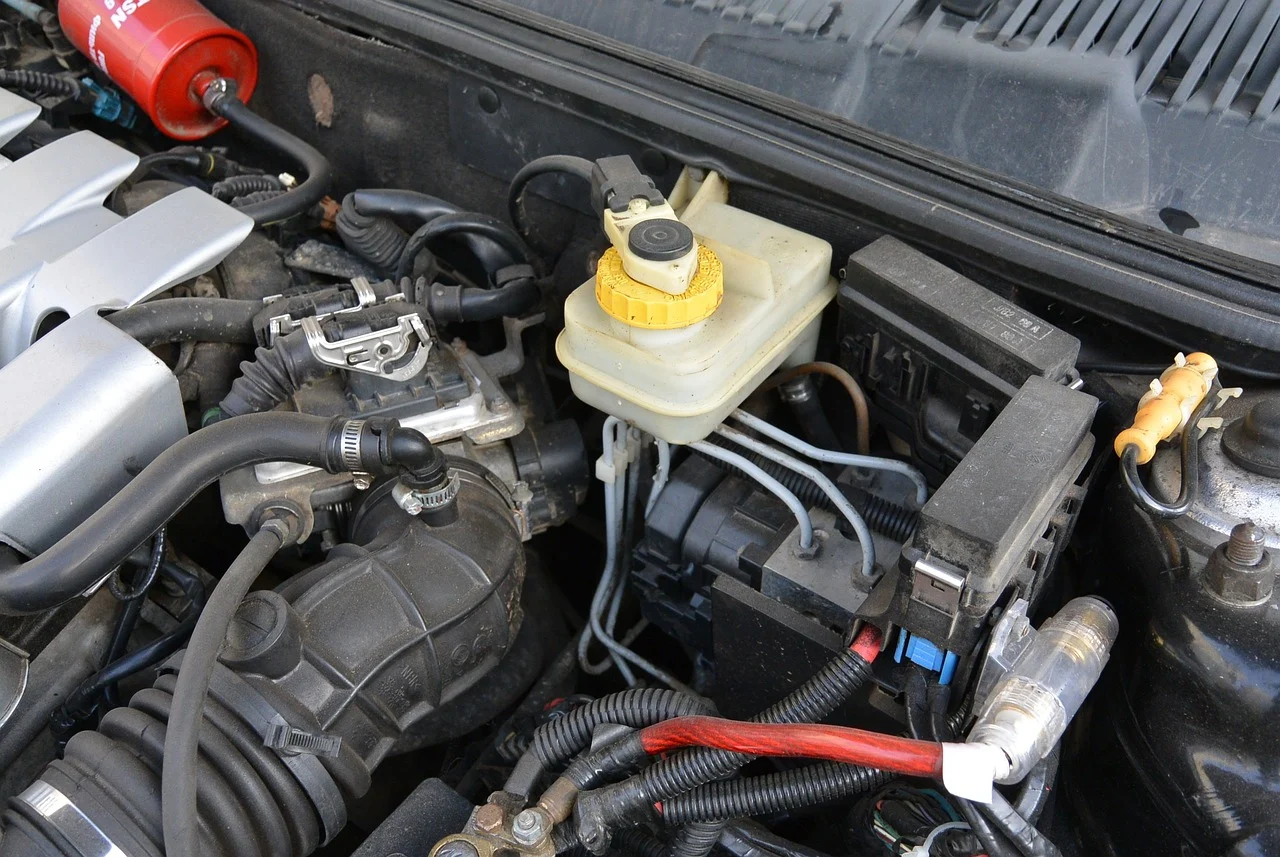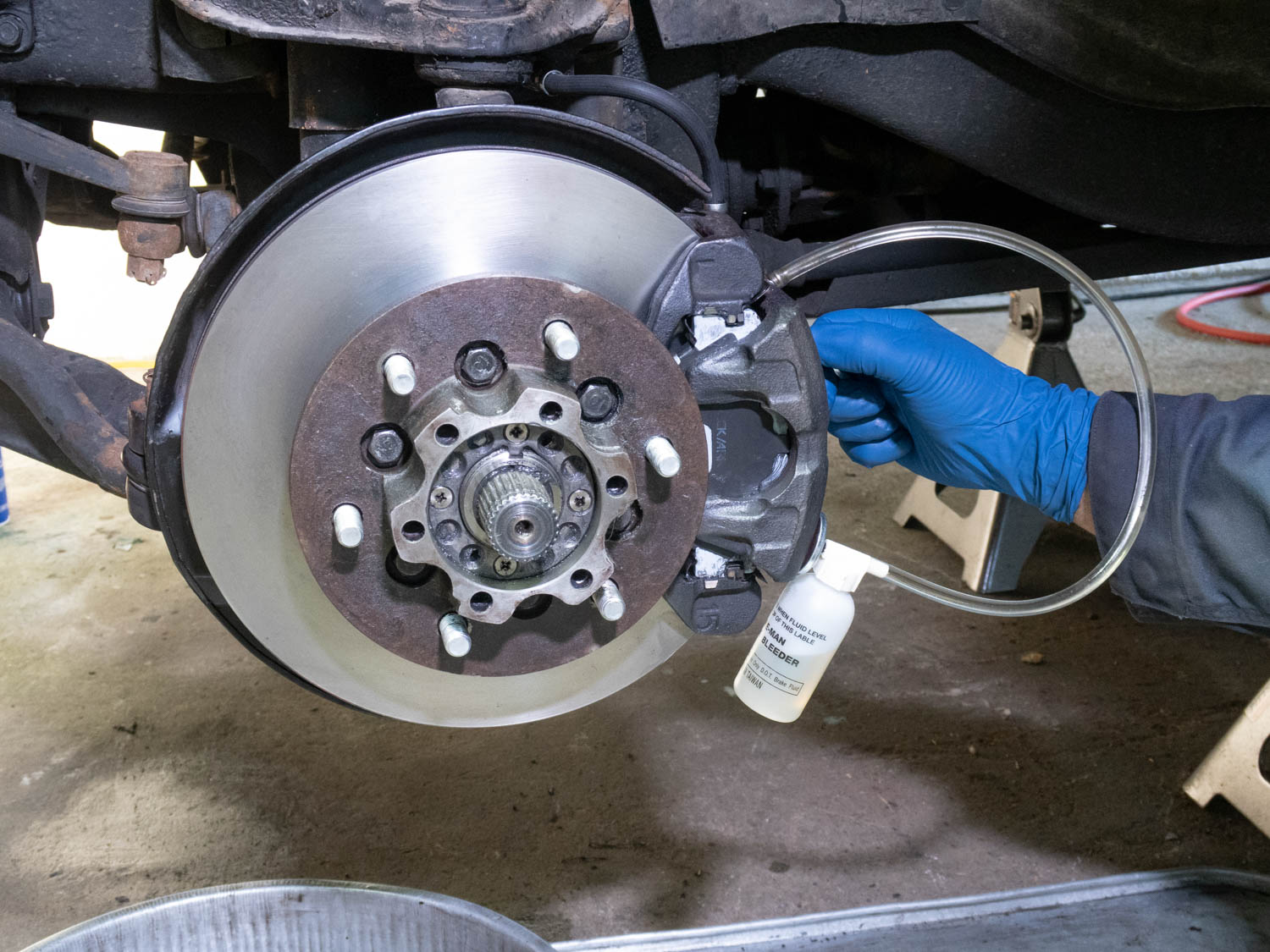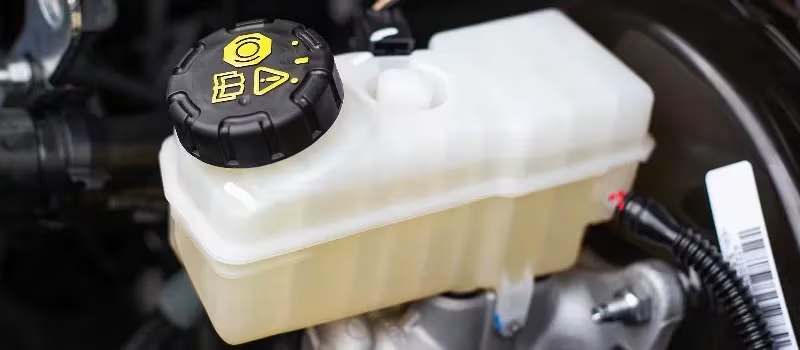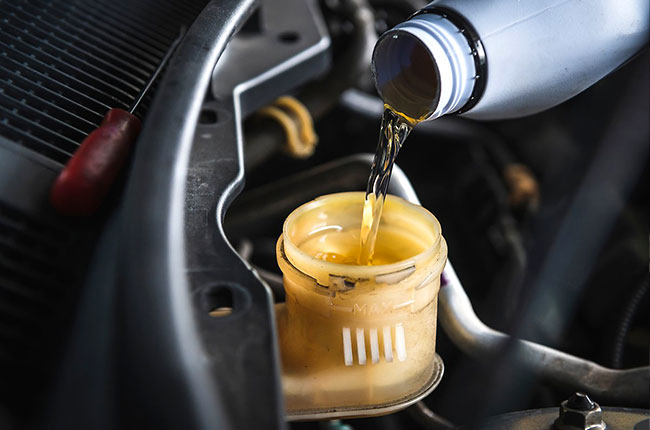How Does Brake Fluid Work?
Brake fluid is a critical component of a vehicle's braking system, acting as the medium that transfers force from the brake pedal to the brake components at each wheel. Here's how it functions:
Hydraulic System
Most modern vehicles use a hydraulic braking system. When you press the brake pedal, you push a piston inside the master cylinder. This piston compresses the brake fluid within the system.
Pressure Transmission
Brake fluid is compact, so it easily sends pressure from the master cylinder through the brake lines to the brake calipers or wheel cylinders at each wheel.
Brake Components Activation
The increased pressure at the wheels forces the brake calipers to squeeze the brake pads against the rotors (in disc brakes) or pushes the brake shoes against the drums (in drum brakes). This friction slows down and eventually stops the vehicle.

Heat Tolerance
Brake fluid is specially formulated to withstand the high temperatures generated during braking without boiling. If the fluid boils, it creates gas bubbles, which are compressible and can lead to brake failure (known as brake fade).
Maintenance
Over time, brake fluid can absorb moisture from the air, which lowers its boiling point and can lead to the corrosion of brake components. Regularly check and change brake fluid as part of routine vehicle maintenance.
How Do You Know If You're Running Low on Brake Fluid?
Running low on brake fluid can be dangerous and should be addressed immediately. Here are some signs that your brake fluid might be low:
- Brake Warning Light: An illuminated brake warning light on the dashboard.
- Soft or Spongy Brake Pedal: A brake pedal that feels soft or spongy when pressed, indicating air in the brake lines due to low fluid.
- Increased Stopping Distance: The vehicle takes longer to stop than usual.
- Brake Pedal Goes to the Floor: The brake pedal travels all the way to the floor with little resistance.
- Unusual Noises: Grinding or squealing noises when pressing the brakes.
- Visible Fluid Leaks: Clear to slightly yellowish fluid with a slightly oily feel under the vehicle.
To Check Your Brake Fluid Level:
- Locate the Brake Fluid Reservoir: Usually near the back of the engine bay on the driver's side, labeled "Brake Fluid”. More Information on where exactly this is can likely be found in your vehicle's owner’s manual.
- Check the Fluid Level: Ensure the fluid level is between the "Min" and "Max" lines on the reservoir. If below "Min," add more brake fluid.
- Inspect the Fluid Condition: The brake fluid should be clear or slightly yellowish. Dark or dirty fluid indicates it's time for a brake system flush and fluid replacement.
What to Do When Your Brake Fluid Is Low
If you discover that your brake fluid is low, it’s important to address the issue promptly to ensure your vehicle’s braking system remains effective and safe. Here’s what you should do:
1. Check for Leaks
- Inspect for Visible Leaks: Look under your vehicle and inspect the brake lines (which run from the master cylinder to each wheel, typically under the vehicle along the frame), the master cylinder (mounted on the firewall in the engine compartment, usually on the driver's side), and the wheels for any signs of brake fluid leakage.
- Repair Leaks: If you find any leaks, have them repaired by a professional mechanic immediately. Driving with a brake fluid leak is dangerous.
- What it Looks Like: Brake fluid is typically a clear to amber-colored liquid when new. It has a slightly oily texture and is relatively thin.
2. Add the Correct Brake Fluid
- Identify the Correct Type: Refer to your vehicle’s owner’s manual to determine the correct type of brake fluid for your car (e.g., DOT 3, DOT 4, DOT 5, or DOT 5.1).
- Clean the Reservoir Cap Area: Before opening the brake fluid reservoir, clean the area around the cap to prevent dirt or debris from contaminating the fluid.
- Add Brake Fluid: Slowly add brake fluid to the reservoir until it reaches the "Max" line. Be careful not to overfill.

3. Bleed the Brakes (If Necessary)
- Air in the Lines: If your brake pedal feels spongy, there may be air in the brake lines. Bleeding the brakes removes this air.
- Professional Service: While some vehicle owners may choose to bleed their brakes themselves, it’s often best to have this done by a professional mechanic to ensure it’s done correctly.
4. Monitor Fluid Levels
- Regular Checks: After adding brake fluid, monitor the fluid level regularly to ensure it remains at the appropriate level. If it drops again quickly, there may be a more serious issue that needs addressing.
5. Address Underlying Issues
- Worn Brake Pads or Shoes: Low brake fluid can sometimes indicate worn brake pads or shoes, which should be replaced promptly.
- Master Cylinder Problems: A faulty master cylinder can also cause brake fluid loss. If you suspect an issue with the master cylinder, have it inspected by a mechanic.

6. Safety Precautions
- Use the Correct Fluid: Always use the type of brake fluid specified in your owner’s manual. Mixing different types of brake fluid can cause damage to the braking system.
- Avoid Contamination: Brake fluid can absorb moisture from the air, which can lower its boiling point and cause brake failure. Keep the brake fluid container tightly sealed when not in use.
- Dispose of Old Fluid Properly: Do not pour old or unused brake fluid down the drain. Dispose of it according to local regulations, typically at an automotive service center or recycling facility.
7. Types of Brake Fluid
There are different types of brake fluid, such as DOT 3, DOT 4, and DOT 5, each with varying boiling points and chemical compositions. Most vehicles use DOT 3 or DOT 4, which are glycol-based fluids, while some performance vehicles use DOT 5, a silicone-based fluid.
8. Seek Professional Help
- Persistent Issues: If you continue to experience problems with your brake fluid levels or braking performance, seek the assistance of a professional mechanic. Persistent issues can indicate more serious problems within the braking system.
Is your brake fluid low or need replacement? Don’t wait—ensure your safety on the road. Schedule a brake service at Kunes Auto Group today. Our expert technicians will inspect your brake system, top off or replace your brake fluid, and address any issues to keep your vehicle running smoothly. Visit us now and drive with confidence!



